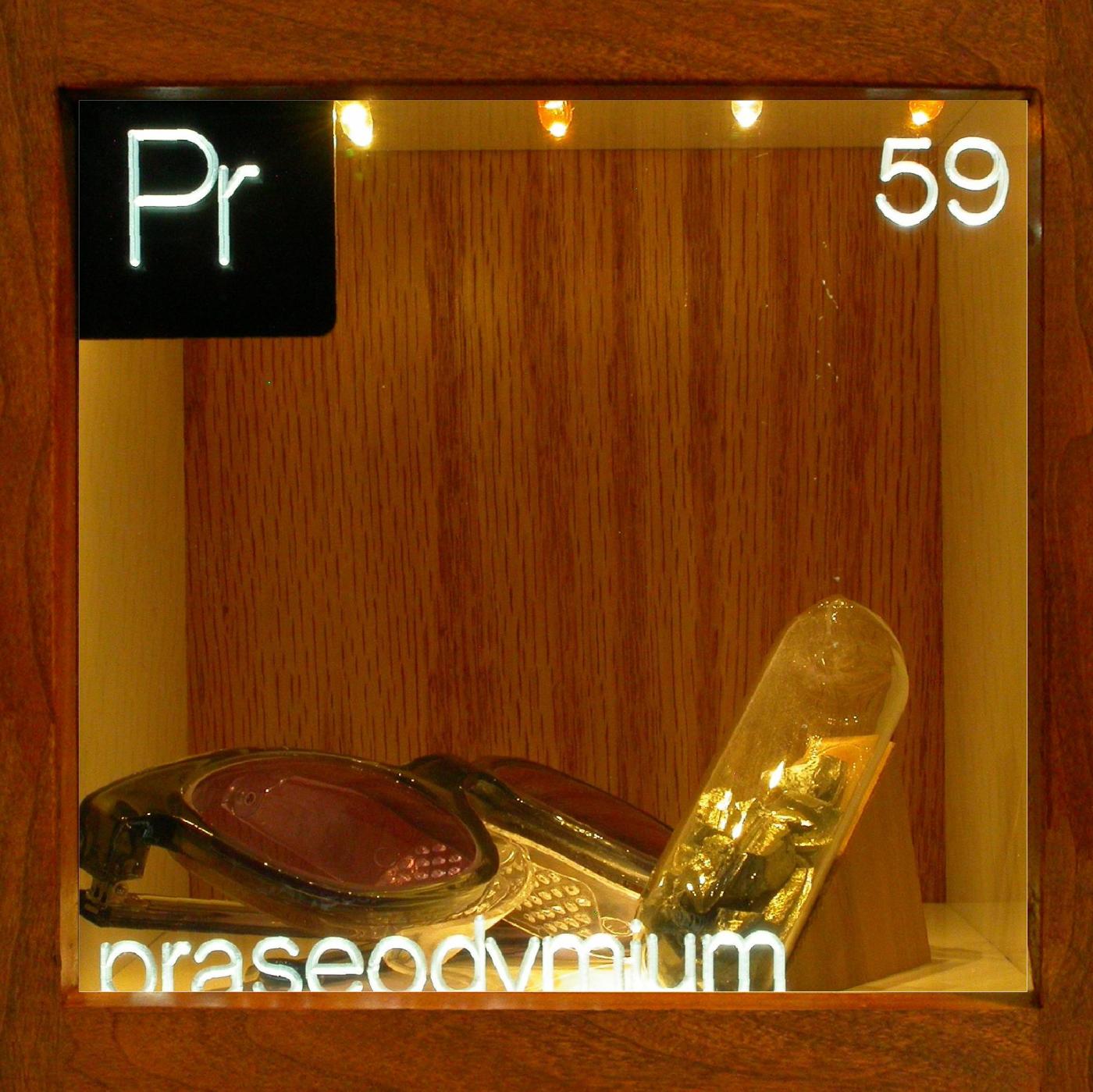Home Size: 1 2 3 4 5 6 7 8 9
|
 |
| A soft silvery lanthanide metal that reacts slowly with oxygen to form a green oxide. It's name is derived from the Greek for "green twin".
|
|
|
 |
Lumps ampouled under argon.
Praseodymium is slightly less reactive than cerium, but its oxide is a very similar green color. One way of telling them apart is that cerium oxide tends to stick to the metal whereas the oxides of praseodymium and neodymium have more of a tendency to fall - or "spall" off, exposing fresh metal to attack. If you look carefully at the walls of this ampoule, you should see a fine dusting of the greenish oxide powder.
Source: China
Size: 0.75"
Purity: 99.9%
|
|
 |
Glass-blower's glasses.
Something magical happens if you look at hot glass through these glasses. The intense yellow sodium flame that tends to obscure the area being heated by a gas torch completely vanishes leaving the work piece perfectly visible. The wavelength of sodium emission is perfectly absorbed by the praseodymium in the glass of the lenses. This type of filter is still known as didymium glass after the old name of praseodymium before it was separated from its twin element neodymium.
Source: Phillips Optical
Size: 6"
Purity: n/a
|
|

